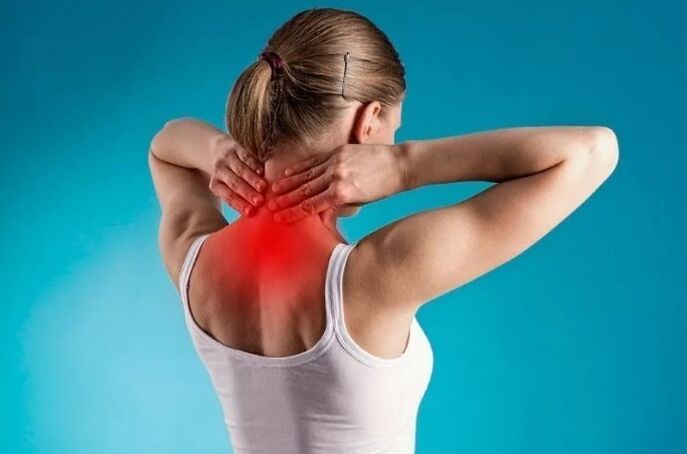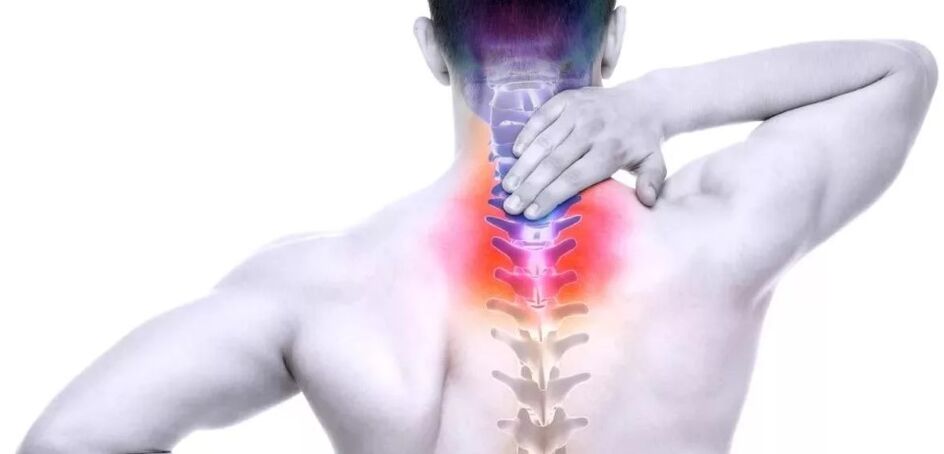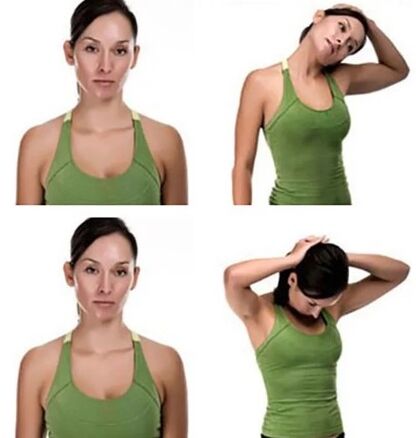Cervical osteochondrosis is a progressive distrophic and deigenerative lesion of intervertebral discs in the 1-7 vertebrae of the cervix.
The cervical osteochondrosis, deformation, fatigue, and then damage to the spinal bodies occur. This disrupts the cervical and cervical nerve roots in the cervical and in the areas of normal blood supply and nerve conductivity.
Cervical osteochondrosis can be isolated or combined with other classes - lumbar and sacred osteocondrosis.
Reasons

In intervertebral discs, the causes of dystrophic and degenerative changes have not yet been sufficiently investigated. The assumption that osteochondrosis is a senile phenomenon of confirmation. It is even found in children and adolescents.
Many factors that prone to osteochondrosis can be distinguished. They belong to:
- Sedomer and sedentary lifestyle,
- Sitting type work with static load on the neck,
- overweight, not sufficient physical development,
- The dysplastic process of connective tissue,
- Violation of blood circulation in the neck,
- Cervical injuries,
- Skoliosis, posture errors, uncomfortable pillows and mattresses,
- Hereditary predisposition, metabolic errors.
Cervical osteochondrosis symptoms
The cervical spine is particularly sensitive to osteochondrosis due to the characteristics of the frame, clarity, and large size of the head.
The most typical symptom that patients complain about - pain in the cervical region. Depending on the zone of injury, pain may be localized
- in the collar and shoulder;
- Throughout the cervical spine;
- On the front surface of the chest.
The pain of osteochondrosis of the cervix is due to the properties of the cervical region.
The first signs of cervical osteochondrosis are insignificant and slightly specific:
- Cervical pain in the evening,
- feeling of difficulty in the head, headache in the occlital zone,
- feeling of numbness or tingling in the shoulders and hands,
- Christ's neck when turning the head and clicking on the vertebrae.

Leading symptoms:
Vegetative dyston
- Quite severe pain in the neck, and especially under the back of the head;
- The pain occurs after a long stay in one situation (such as sleep);
- Cervical muscles are constantly tense;
- There are difficulties when the hand is left to the side;
- On the affected side, the fingers are limited in movements.
Because the spine arteries are compressed, neurological manifestations can be observed: headache, nausea, fainting.
Spine symptom
The pain is located behind the sternum on the left.
This type of pain should be distinguished from pain, as in the case of angina pectoris (in the case of angina pectoris, nitroglycerin is relieved, osteochondrosis - not).
There is a gradual violation of the structure of the intervertebral discs (compression) and the roots of the nerves, as well as the reduction or violation of arteries and veins in the area of the spinal bodies.
This leads to special syndromes - radicular and ischemic.
- Roots of the first cervical vertebrae (C1): violations affect the back of the head, reducing skin sensitivity;
- C2 injury causes pain in the crown of the crown and the back of the head;
- C3 lesion causes pain in the neck from the side of the infringement, a decrease in tongue sensitivity and sub -right muscles, in some cases with speech impairment and loss of control over the tongue;
- The defeat of C4 and C5 causes pain in the shoulders and wrists, a reduction in the muscles of the head and neck, hiccups, respiratory disorders and heart pain;
- C6 defeat most often causes pain to the neck, forearm, thumb, skin sensitivity:
- The defeat of the C7 causes similar symptoms around the neck, the back of the shoulder, to the back of the hand, to the violation of the hands of the hands, and the decrease in reflexes.
Blood circulation disorders due to compression of the cervical vertebrae cause headaches for migraine, severe dizziness, visual impairment and ears, blinking in front of the eyes, and autonomous functions.

The manifestation of heart syndrome may result in compression heartache, lack of air and heartbeat, and rhythm disorders.
Complication
Severe complications of osteochondrosis of the cervix are as follows:
- Protrusion of intervertebral discs with hernia formation (protrusion);
- Fracture of the intervertebral disk with violation of nerves and blood vessels, and spinal compression is possible, which can lead to death;
- There may also be radiculopathies (roots injuries), the formation of osteophytes (spikes on the vertebrae) with the manifestation of paresis and paralysis.
Diagnosis
In the presence of the above complaints, an appeal is required to an orthopedic doctor or neurologist.
Above all, the doctor appreciates the mobility and pain of cervical, sensitivity and other features. The radiography of the cervix then requires multiple projections, if necessary, computer tomography or magnetic resonance with suspicion of hernia.
In the case of circulatory disorders, Reoencefalography and the Fund are required.
Treatment of cervical osteochondrosis
Nowadays, there are traditional and non -conventional methods of treating osteochondrosis in the cervical spine.
Conservative methods are mainly used:
- Symptomatic treatment with painkillers to relieve pain syndrome
- Recep
- Medicines and medicines for repairing blood circulation are used to eliminate muscle cramps.

In the treatment of cervical osteochondrosis, substances that restore the structure of intervertebral discs - chondroprotectors.
We show the process of vitamin B vitamin B, and external products of therapy can be used -creams with gels and ointments, anti -inflammatory and analgesic components. It shows stimulants for regeneration of intervertebral discs.
Exceeded and general massage, acupuncture, physiotherapy, physiotherapy and gymnastics, as well as gymnastics help treat osteochondrosis. The method of osteopathy proved to be well - a slight effect on the "squeezed" zones of the muscles and vertebrae.
It is recommended to wear a special collar (Shantsa collar) in the treatment of osteochondrosis of the cervix.
Complications of osteochondrosis of the cervix with hernia that violate sensitivity and blood circulation.
The duration of treatment depends on the neglect of the condition as osteochondrosis is a progressive chronic disease. Treatment can be long and preceding courses are performed for life.
Proper nutrition helps to relieve the condition of osteochondrosis.
Exercises to treat the cervix osteochondrosis:
- Self -cleaning: In a straight back position, the shoulders should be reduced as low as possible while pulling the neck up. You must perform at least 10 approaches at least three times a day.
- Own massage: Wishing your neck with a towel, at the end, and alternately pull them, spreading the neck muscles. In this case, make sure that the towel does not slip along the neck.
- The gymnastics of the cervical region for osteochondrosis: small bending of the neck, head turns and head overthrowing. At the same time, 5-7 tiles are done in both directions. This exercise is best done after self -mass the cervix's spine.
Prevention
The health of the cervical spine is based on a strong and healthy back, physical activity, comfortable bed with anatomical pillows and mattresses, proper posture and proper nutrition.
It is worth avoiding cervical injuries and weight lifting. The prolonged seat and warm periods should be combined.























